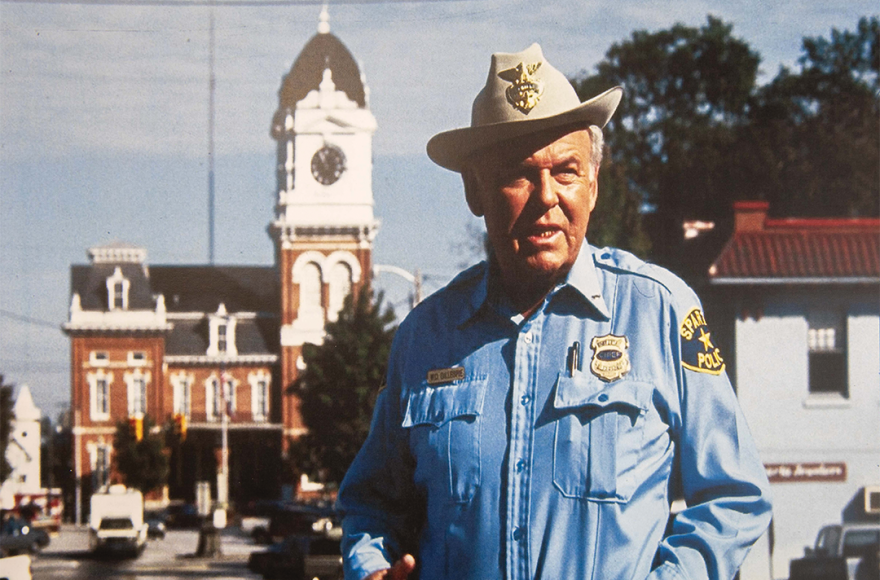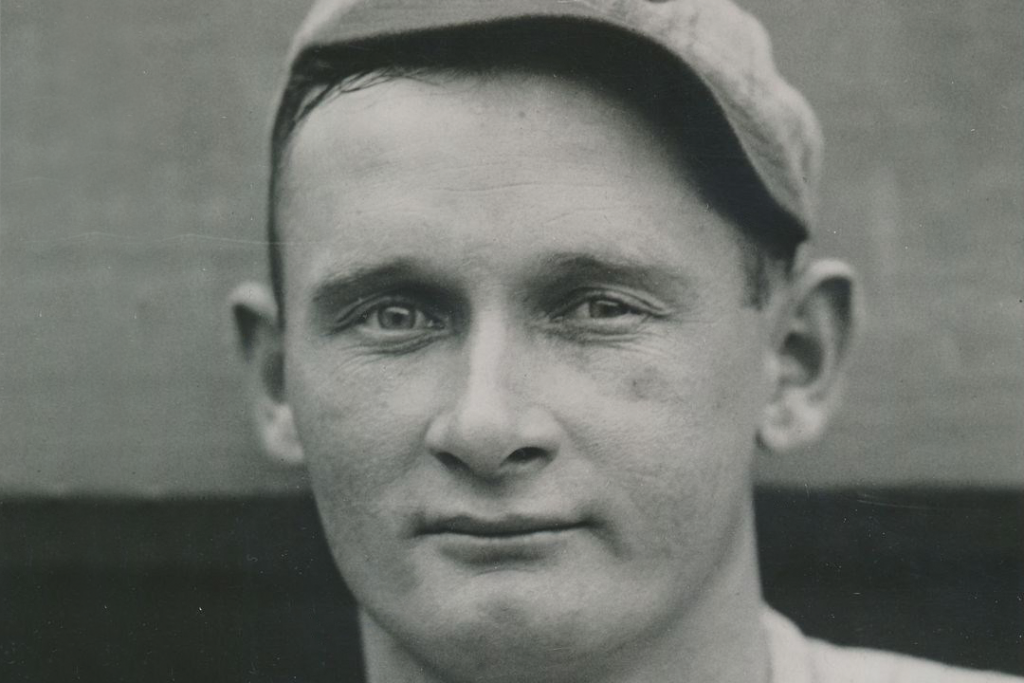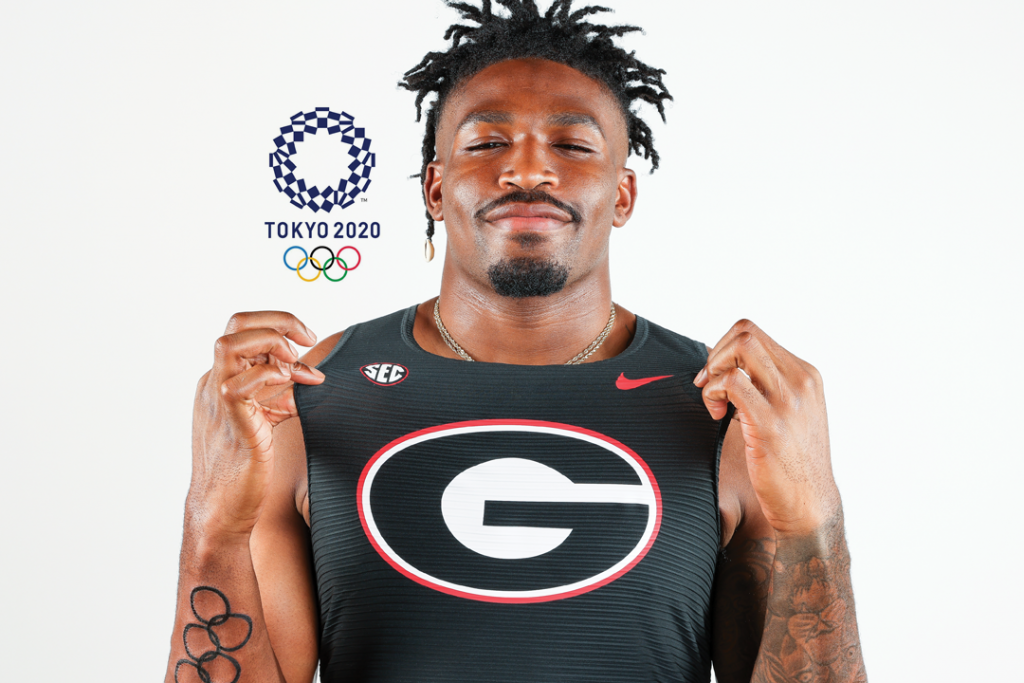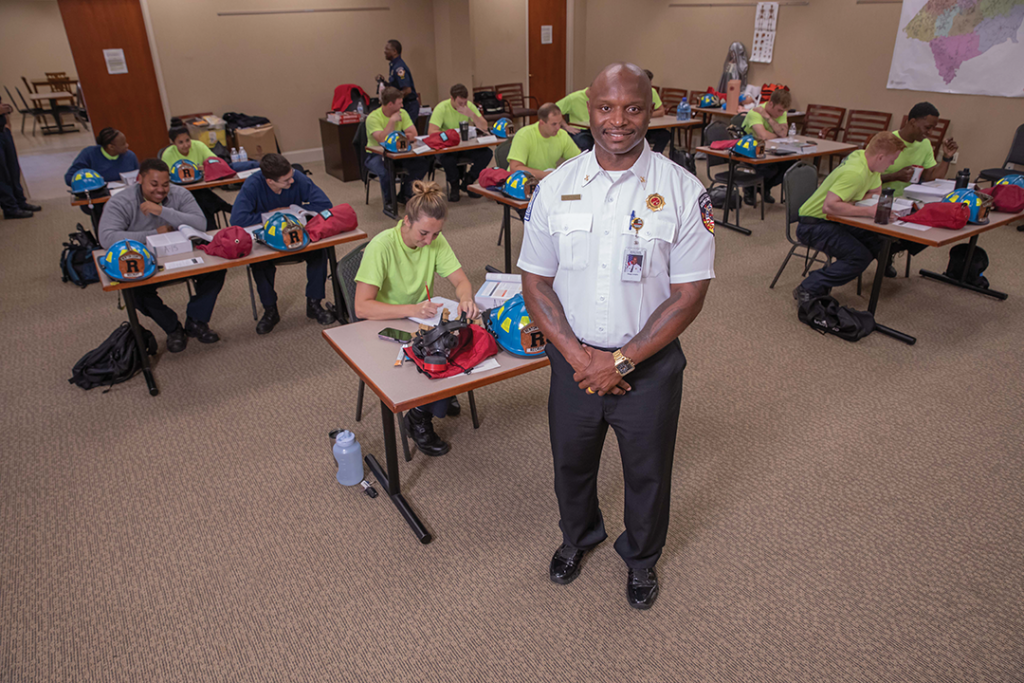Newton County had been on the film industry’s radar for years, but during its seven-year run from 1988 to 1994, ‘In the Heat of the Night’ flung open the doors to an influx of business that exists to this day.
Along about 11 a.m. one wintry morning in the late 1980s, the public address speaker in my classroom at Sharp Middle School crackled to life. I was teaching a social studies class when Principal Thomas Glanton interrupted and told me I was needed in his office. I explained my status, to which he replied that someone was on the way to watch my students. The first and foremost thought in my mind was that this could not be a good thing. A second thought occupied my mind as I walked to the office from my classroom: What could I have possibly done wrong?
As I entered the front office, longtime school secretary JoAnne Preston waved me through to Glanton’s office without even saying a word. In the inner sanctum, I found Glanton seated behind his desk and two adult males dressed in grunge clothing seated in two other chairs. Glanton beckoned me toward the only empty chair left and proceeded to introduce me to the two men, one of whom was a producer, the other a director, for the television drama “In the Heat of the Night,” which starred Carroll O’Connor and was being filmed in and around Covington. Although parts of the series’ first season had been filmed in Louisiana, “Heat” had found a home in Covington, transforming it into the fictitious Sparta, Mississippi. The two men were part of the team of movers and shakers in charge of filming the episodes. As the introductions were being made, I wondered, “What could any of this possibly have to with me? What could be important enough to get me out of a classroom in the middle of an instructional period?” The plot thickened at this point.
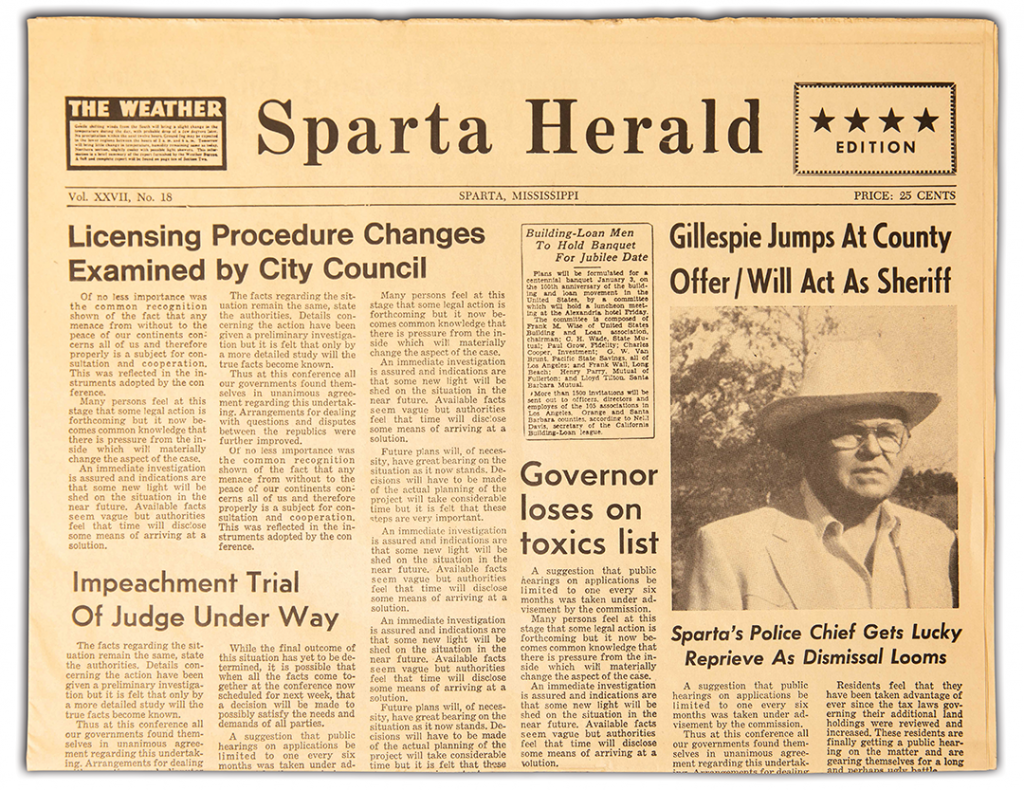
I was also serving Sharp Middle School as the boys’ basketball coach at the time. We were in the middle of the season, and practice followed immediately after school. It was explained to me that the men wanted to use the historic gym—where legendary coach Ron Bradley once won a national record 129 consecutive home games (the record stands to this day) for Newton High School—to film an episode of “Heat” that required them to set up a boxing ring and necessary lighting. They needed the gym just that one afternoon and evening, as they also planned to film a bloody murder scene in the shower area under the north stands. They put the question to me: Would I be willing to call off basketball practice that afternoon to allow the filming to take place? To his credit, Glanton had put the ball in my court and would agree or disagree based on what I decided. I thought about it for about 10 seconds, the time drawing out seemingly for hours as the men fidgeted in their seats.
“Gentlemen, as you know, we are in the midst of a challenging season, and every practice is important,” I said. “However, I will agree to call off practice today and allow you to do what you need in the gym on one condition: I want to be in a scene with Carroll O’Connor himself. If you will agree to that, the gym is yours.” So it came to pass that practice was cancelled. I reported to the wardrobe area in a soundstage set up in a warehouse over on Hazelbrand Road, where I was fitted into a Sparta police uniform. At approximately 6 p.m. that same day, Sparta Police Chief Bill Gillespie (O’Connor) held a briefing for all his officers, and there I am, on camera, right behind the man who portrayed him. I always referred to O’Connor as Archie Bunker—the polarizing character he played previously in “All in the Family.” It was for me the beginning of opportunities to appear as an extra in six episodes filmed in Covington in the late 1980s. They included one featuring a beauty pageant in which I, playing a photographer, have a full-face shot walking into the camera. I felt certain that I would be edited out of that scene, but when it aired in those pre-cell-phone days, our landline rang off the hook from friends and family calling to tell me that they had just seen me on television.
“It was a simpler time, and a television show that featured a white police chief from the Deep South teaming up with a black detective went a long way toward promoting harmony in this corner of the world.”
Nat Harwell
Many Newton County residents can talk late into any evening about such stories. For example, a gentleman named Grady Spradley just happened to be a dead ringer for O’Connor himself. Grady was utilized as a stand-in for many shoots. While this is just hearsay, it has been told to me that O’Connor would pay Grady to have dinner out at various restaurants in order for the actor and his wife to have a quiet dinner without being harassed ceaselessly for autographs. There were the police chases and the encounters with actors at seemingly every turn on The Square. The storefront for the Gary Massey Agency was transformed into the show’s town cafe. Covington’s old post office at the corner of Conyers and Monticello streets became the headquarters for the Sparta Police Department. Massey, our neighbor at the time, saw my wife and children watching as an exterior shot of Chief Gillespie entering the cafe was about to get underway. He beckoned to Louise to bring the kids inside his office to watch. O’Connor came in and chatted with Louise and the kids for a few minutes. “All I remember,” she said, “is that Carroll O’Connor had the bluest eyes I’ve ever seen.”
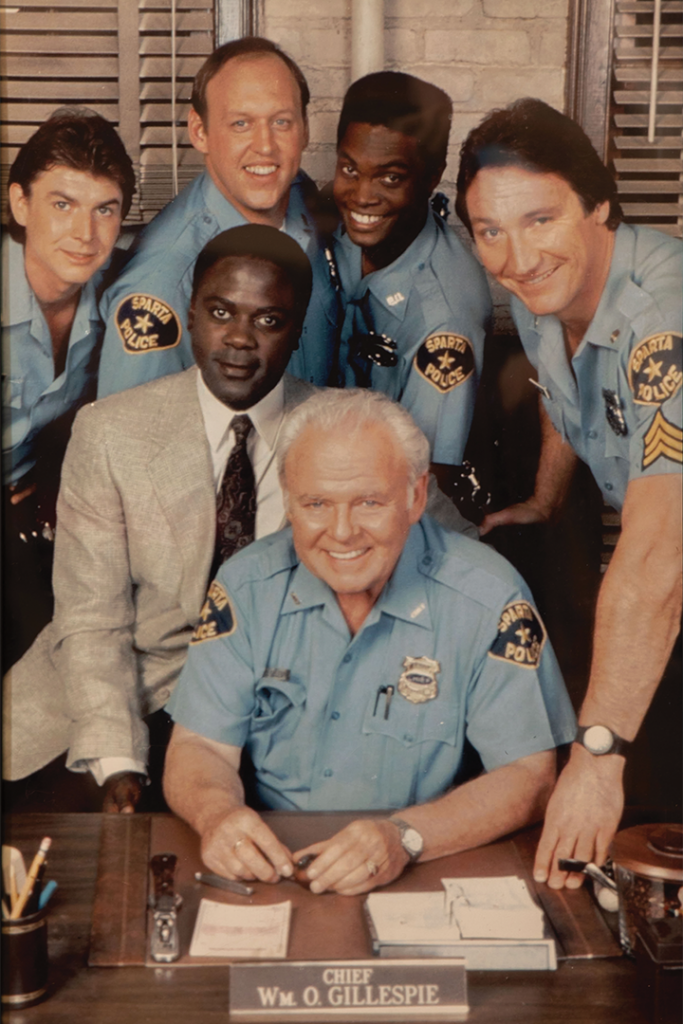
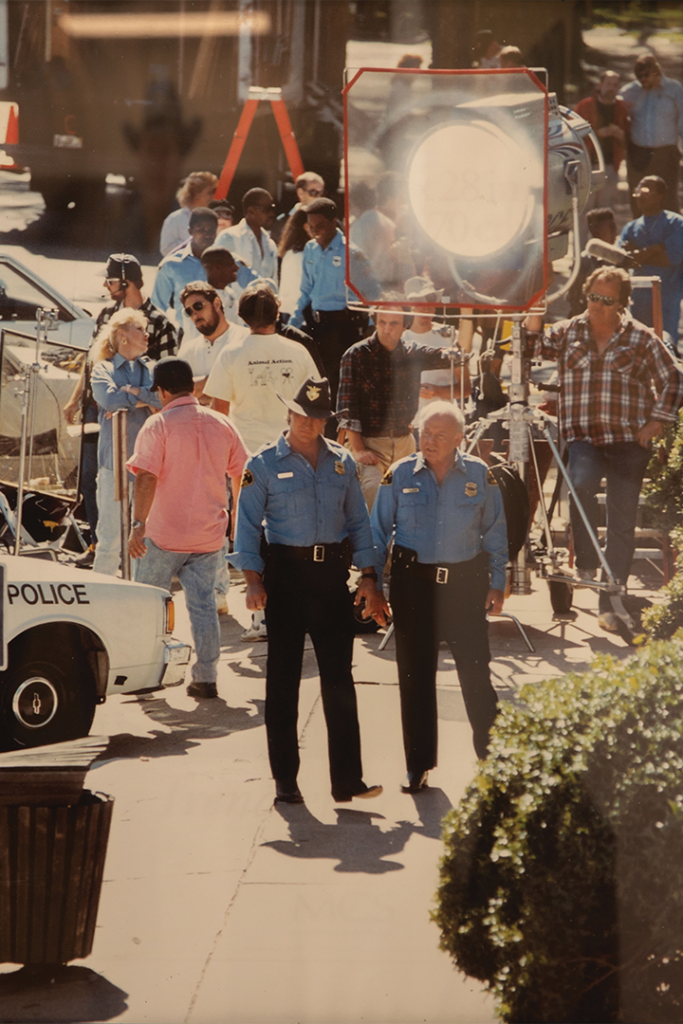
There was also an unforgettable day at the corner of Crestview and Forest drives, where a scene involving a car crash was being shot near the home of Skip and Betty MacFadden. Louise was bringing the girls home from a clogging show—instructor Kim Dylong called it “The Dylong Express—and they were in their dance outfits. Actor Alan Autry, who played Officer Bubba Skinner on “Heat,” stopped them and asked if they could clog for him. To his delight, they agreed. Autry had the broadest grin on his face, and many locals who were around during those days can testify that he was always friendly to everyone he encountered.
Covington had been on Hollywood’s radar for years. “A Man Called Peter” was filmed here, along with “Cannonball Run” and “The Dukes of Hazzard.” However, “In the Heat of the Night” blew open the doors to the film industry. It was a simpler time, and a television show that featured a white police chief from the Deep South teaming up with a black detective—Howard Rollins played Virgil Tibbs for 121 episodes and won an NAACP Image Award for Outstanding Actor in a Drama Series in 1989—went a long way toward promoting harmony in this corner of the world.
Although I had basically blackmailed my way into that first scene with O’Connor, I do relish the memory of how a nervous walk down a long hallway to my principal’s office turned into some special moments for me in a television series with Archie Bunker.
By The Numbers:
Loosely based on the novel and film of the same title, “In the Heat of the Night” ran for seven seasons on NBC and CBS, from March 6, 1988 to May 16, 1995. It remains popular in syndication.
142: Total episodes. Eight episodes aired during Season 1, followed by 22 episodes each for the second, third, fourth, fifth and sixth seasons. The seventh and final season featured 24 episodes.
15,639,200: Average viewers for Season 1, which established the benchmark for the series.
17.3: Peak rating. It was achieved during the show’s second season, which ran from Dec. 4, 1988 to May 16, 1989. “Heat” was the 18th-most-watched program on television at the time.
4: Made-for-television movies spawned by the series. The films aired on CBS and were titled “A Matter of Justice,” “By Duty Bound,” “Grow Old Along with Me” and “Who is Geli Bendl?” They were packaged together on DVD and marketed as the show’s eighth season.
Click here to read more stories by Nat Harwell.

